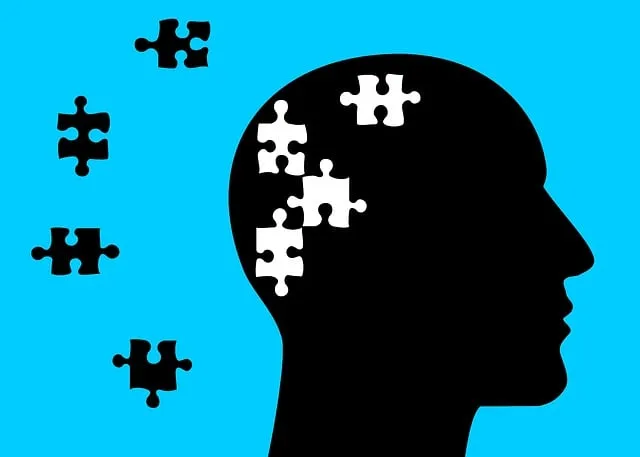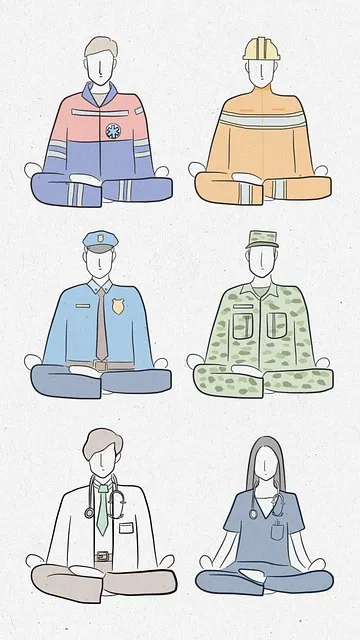The Kaiser Permanente behavioral health center in Lone Tree takes a proactive stance against mental health stigma by leveraging media platforms to share stories of resilience, fostering empathy and self-awareness within the community. They offer comprehensive services like Crisis Intervention Guidance and Trauma Support, advocating for nuanced media representation through Emotional Intelligence and Mental Wellness Coaching Programs. By promoting Mental Health Policy Analysis and Advocacy, they bridge gaps in understanding, encouraging systemic consideration of mental health as integral to overall wellness. Their collaborative approach with diverse communities and professionals fosters accurate portrayals, enhances help-seeking behaviors, and promotes a culture of compassion for mental wellness.
Mental illness representation in media significantly influences public perception, often perpetuating stigma or promoting understanding. This article explores the impact of media portrayals on mental health, focusing on Kaiser Permanente’s (KP) innovative approach at their Lone Tree behavioral health center. We delve into the current challenges, identifying gaps in accurate representation and proposing strategies for positive change through media and education. Additionally, we emphasize the power of collaboration between communities and professionals to revolutionize mental illness depiction.
- Understanding the Impact of Media Portrayal on Mental Health Perception
- The Current State: How Kaiser Permanente Lone Tree Addresses Stigma
- Identifying Challenges: Gaps in Accurate Representation
- Strategies for Positive Change: Empowering Through Media and Education
- A Collaborative Approach: Engaging Communities and Professionals Together
Understanding the Impact of Media Portrayal on Mental Health Perception

The media has a profound impact on shaping societal perceptions and understanding of mental health. The way mental illnesses are represented in films, television shows, and news coverage can either promote awareness and reduce stigma or perpetuate harmful stereotypes and misconceptions. Accurate and empathetic media portrayal is crucial for fostering an environment that encourages individuals to seek help without fear of judgment.
At the Kaiser Permanente behavioral health center Lone Tree, we recognize that media influences public opinion significantly. By providing platforms for sharing stories of resilience and recovery, we aim to enhance self-awareness exercises and empathy building strategies. This proactive approach empowers those facing mental health challenges and equips the wider community with the tools needed to offer trauma support services effectively.
The Current State: How Kaiser Permanente Lone Tree Addresses Stigma

Kaiser Permanente’s Lone Tree behavioral health center stands as a beacon of hope and support for those grappling with mental illness in the region. In an era where stigma still lingers, this facility has made significant strides in challenging societal perceptions and providing comprehensive care. Their approach is multi-faceted, focusing on education, early intervention, and accessible services.
The center offers Crisis Intervention Guidance tailored to diverse populations, ensuring that individuals experiencing acute mental health crises receive prompt and compassionate assistance. Additionally, they provide Trauma Support Services, recognizing the profound impact of traumatic events on mental well-being. Through various programs, Kaiser Permanente Lone Tree aims to foster a sense of community, reduce anxiety, and offer much-needed relief for all those seeking help, making it a key player in the ongoing fight against mental illness stigma.
Identifying Challenges: Gaps in Accurate Representation

The media’s portrayal of mental illness often falls short of representing the complexities and nuances of various conditions. This gap in accurate representation is a significant challenge, especially when it comes to raising awareness and promoting understanding among the general public. At the Kaiser Permanente behavioral health center Lone Tree, professionals strive to bridge this divide by highlighting the need for more nuanced storytelling.
The current narrative often reinforces stereotypes or presents mental illness as solely a personal struggle, neglecting systemic issues and the role of societal factors. By advocating for Emotional Intelligence and Mental Wellness Coaching Programs Development, these centers aim to foster a broader perspective. Furthermore, encouraging Mental Health Policy Analysis and Advocacy can lead to more informed and inclusive media representations, ensuring that the public gains a deeper understanding of mental health as a multifaceted aspect of overall wellness.
Strategies for Positive Change: Empowering Through Media and Education

The media plays a pivotal role in shaping societal perceptions about mental illness, and this influence can be harnessed for positive change. To foster a more empathetic and supportive environment, it’s essential to implement Empathy Building Strategies that challenge stereotypes and promote understanding. Organizations like the Kaiser Permanente behavioral health center Lone Tree are at the forefront of these initiatives.
Through collaborative efforts with media outlets, healthcare professionals, and community leaders, these centers can develop comprehensive programs aimed at Mental Wellness. This includes creating engaging content that accurately represents various mental health conditions, organizing awareness campaigns, and integrating Depression Prevention strategies into educational curricula. By empowering individuals with knowledge and dispelling myths, we can foster a culture where people feel comfortable seeking help and supporting their peers.
A Collaborative Approach: Engaging Communities and Professionals Together

A collaborative approach to tackling mental illness representation in media involves bringing together communities and professionals from various backgrounds. By fostering partnerships between local organizations, healthcare providers, such as those found at the Kaiser Permanente behavioral health center Lone Tree, and community members, we can create a more nuanced and accurate portrayal of mental health. This collective effort ensures that stories shared are not only representative but also respectful and healing for all involved.
Engaging in open dialogue allows for a deeper understanding of emotional healing processes and burnout prevention strategies for healthcare providers. It empowers individuals to share their experiences authentically, boosting confidence and challenging stereotypes. Together, these collaborations can drive meaningful change, reflecting a more compassionate and informed society that prioritizes mental wellness for all.
Mental illness representation in media is a powerful tool that can significantly shape public perception. By highlighting the efforts of organizations like Kaiser Permanente’s behavioral health center in Lone Tree, we see a shift towards more accurate and compassionate portrayals. Identifying challenges and implementing strategies that foster understanding and education are crucial steps in challenging stigma. Through collaborative approaches that engage both communities and professionals, we can work together to create a media landscape that promotes empathy and support for those facing mental health issues.






